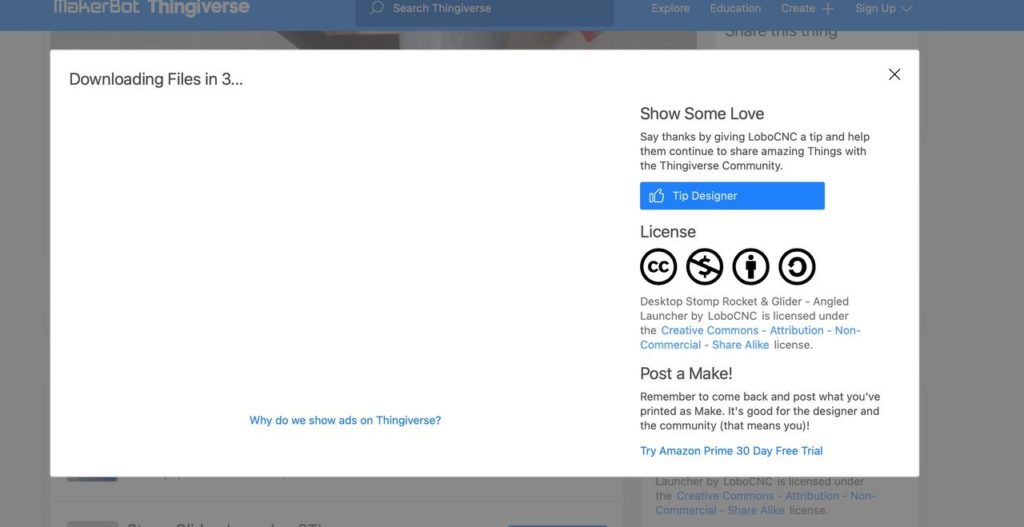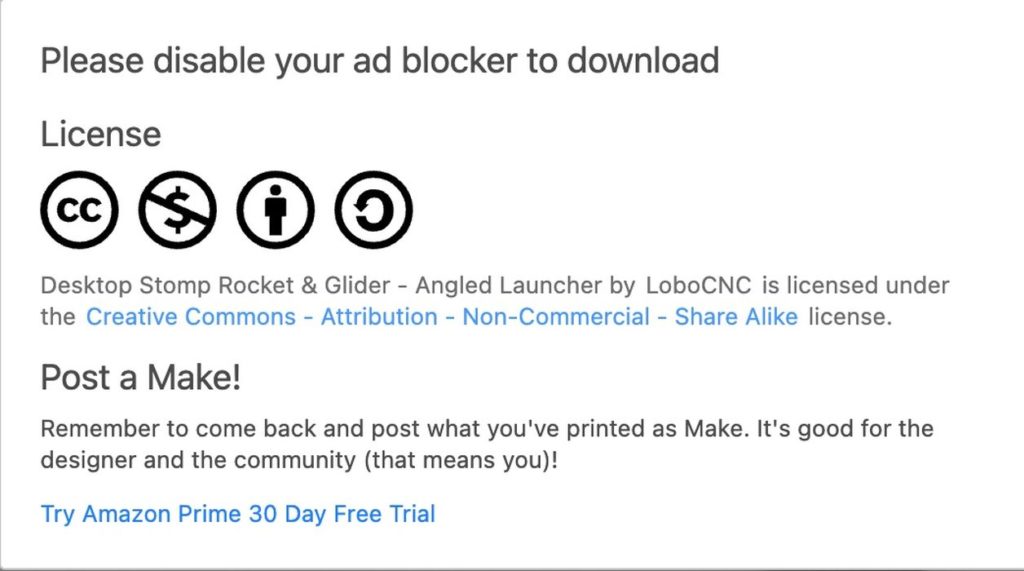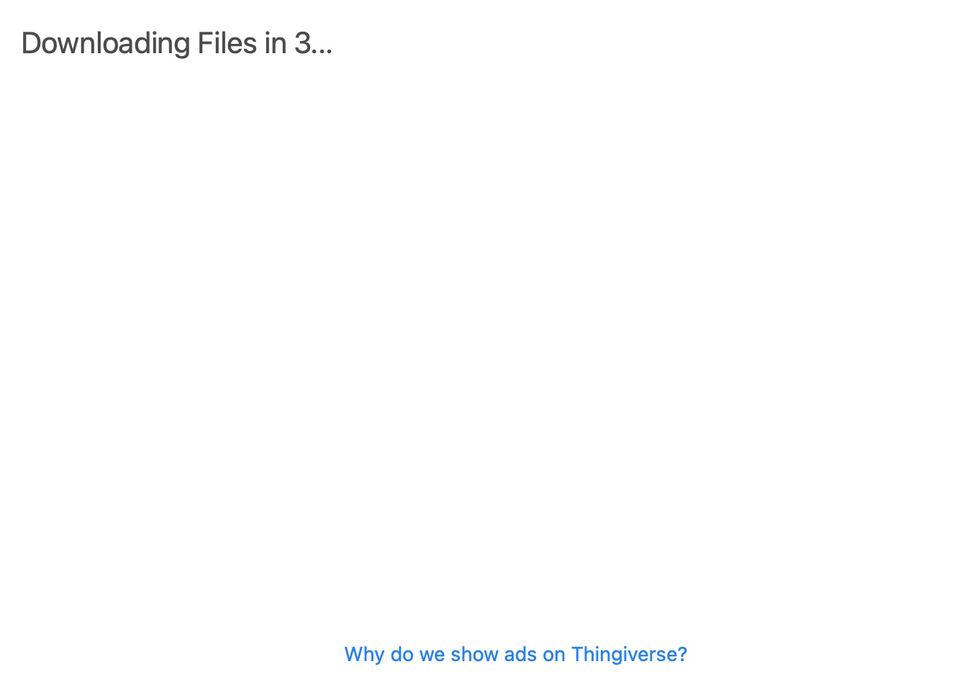
MakerBot implemented changes to Thingiverse that make some users very unhappy.
Thingiverse is by far the largest single repository of user-contributed 3D printable items for general download. The site was built way back in 2009 as an aid for early MakerBot 3D printer operators to freely access printable content. The idea worked very well, as operators who were unable to design their own 3D models could still print many things.
Because it was the first repository option in the space, it grew quickly along with the rest of the industry. Today it hosts an astonishing 5.3M 3D models that can be downloaded. Note that number is the count of projects, not the actual parts as each project could contain many parts. The number of models on the site is so gigantic that scalability issues, such as the ability to search for specific items becomes challenging.
Other sites offering similar functionality have popped up over time with varying degrees of success. In spite of the competition, Thingiverse still remains at the top of the list for sheer number of 3D models, and it’s still often the first site designers use to upload new 3D models.
However, things have changed at MakerBot. While the company began in 2009 as a DIY-oriented operation, business conditions forced them to switch target markets. Today they make equipment and software for professionals, designers, educators and industry, and not for consumers or DIY folks.
During this transformation Thingiverse remained in place, even though there was a much lower need for it with MakerBot’s new markets. My understanding was that Stratasys’ purchase of MakerBot had some intent to leverage the content on Thingiverse in the long run, but today it seems MakerBot uses Thingiverse primarily for its educational programs.
Meanwhile the 3D print community continues to use Thingiverse for its original purpose, free sharing of 3D models.
Thingiverse is obviously not a top priority for MakerBot these days, but they do keep it running. They’ve made some minor changes in recent months that they say have improved the experience. One change that was noticeable was the addition of small advertising blocks embedded in search results. These would scroll by as you perused the list looking for your 3D model.
However, this past week there were some additional changes that seem to have angered a great many Thingiverse users.

The change is a popup delay when downloading a selected 3D model. Now when you click on a filename to download the 3D model, a popup appears and begins a five second delay before the file is downloaded. Previously you could click on the file links and downloads would commence immediately.
Five seconds doesn’t sound like a big deal, and is a delay that sometimes happens anyway on download sites. However, there’s a big complication here: many Thingiverse projects are composed of multiple 3D models. I’ve seen many that have thirty or more parts that must be downloaded. Thirty times five is 150 seconds, or getting on to three minutes just for the download delays. That’s a lot.
The idea here is to provide a five second period where advertising can be shown to the downloader in the popup window. For some reason I never actually saw an ad during my testing, but others seems to have done so.
How do I know this? If you happen to have an adblocker plugin running on your browser, you get this when attempting to download a file:

Turning off the adblocker immediately releases the file on the next click. The delay is therefore designed to show advertisements.
Hold on, you say, can’t you just use the “download zip” feature to get all the files in one archive? Apparently not — that feature has been removed, forcing you to download the files individually and therefore seeing ads during five second periods.
Some ingenious hackers have discovered that the zip files still exist, at least for earlier projects. They can be accessed by inputting a specific URL, but there’s no guarantee these files will exist in the future. There’s also code floating around to circumvent the delay for more advanced users. However, the vast majority of Thingiverse users won’t use these techniques.
Needless to say, this change has caused quite a stir in the 3D print community, with plenty of angry users stating their intention to never use Thingiverse again, and recommending other sites to use as an alternative. (Aside: we have a list of Thingiverse Alternatives here).
On the other hand, Thingiverse is a very large site with plenty of traffic, and that costs quite a bit of cash to operate. Thingiverse has added the advertising to get some value from their investment in the site, which otherwise has zero sources of revenue.
In the old days it was reasonable for MakerBot to just pay for the site because it directly aided their hardware sales. The hardware revenue subsidized Thingiverse. That’s no longer the case as MakerBot’s current and future customers have far less interest in public file sharing. This puts MakerBot in a difficult position: how can they justify paying a huge amount of money for a site that doesn’t provide the same benefit to their business?
The answer, apparently, is to have the site generate revenue on its own. Advertising is perhaps the simplest way to do so: the traffic becomes instantly monetized by adding some code.
There are other ways MakerBot could monetize the site. One way would be to fully develop a pay-for 3D model feature where they could skim off commission fees as transactions take place. This is the approach done by several other 3D model repositories, apparently successfully. However, that approach is far more complex and requires quite a bit of subtle effort to attract high-quality designers.
Here MakerBot has chosen the simple approach to monetizing Thingiverse, but in the process they seem to have alienated a number of site users. This will benefit alternative sites, of course, which will no doubt seem a bump in their communities.
I have more thoughts on this situation and the future of Thingiverse, but this piece is long already and I’ll post more another day.
[UPDATE] MakerBot reached out to us and provided a statement on the change:
“Thingiverse’s goal is to provide users with free and comprehensive 3D printing content, without limitations or the need for a paywall. The ads we show on Thingiverse help us maintain and improve the site to deliver the best free experience for the community.
User experience is important to us and we will continue to evaluate other ways to sponsor the costs of hosting Thingiverse.”
Via Thingiverse

